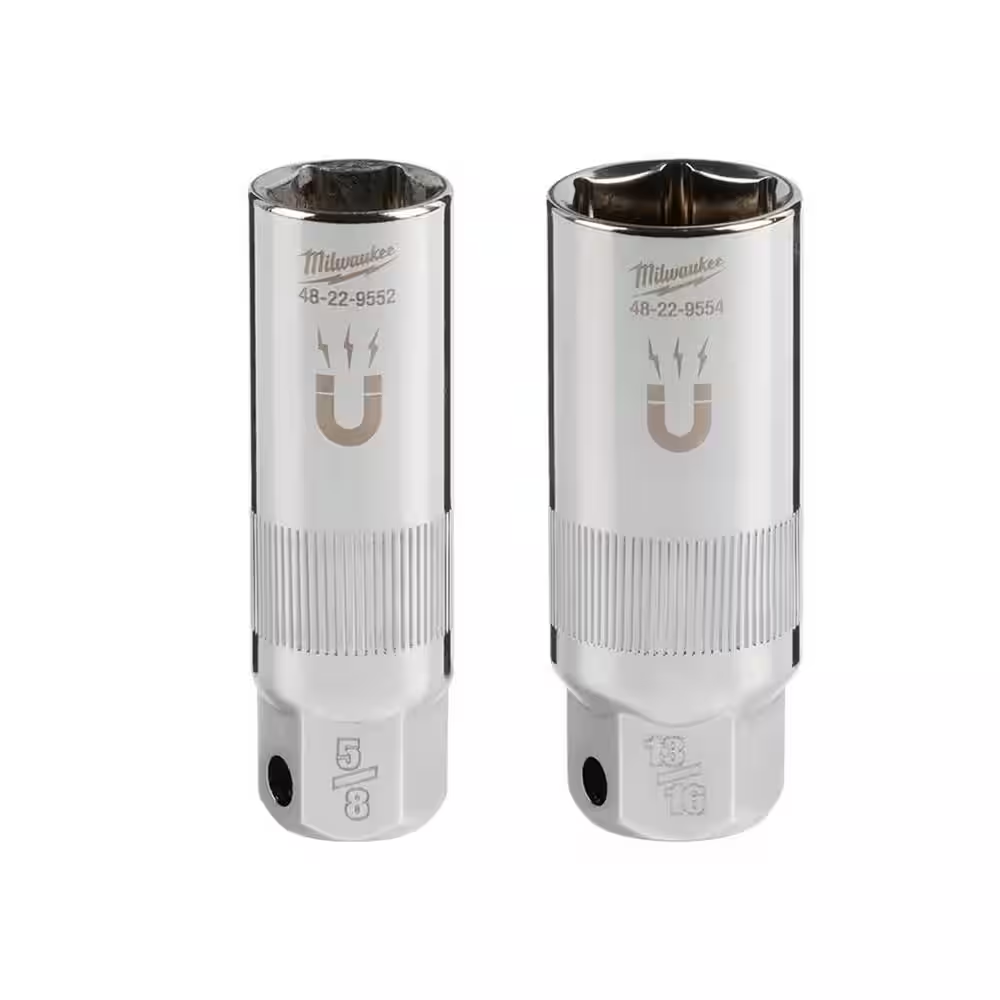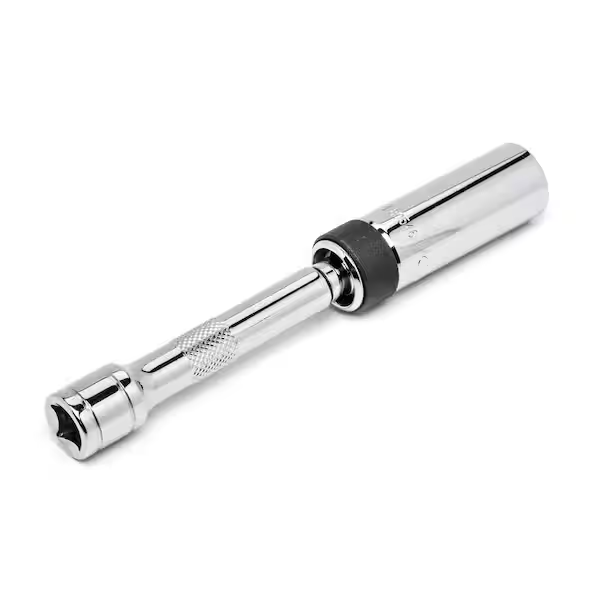Spark plugs are a vital component of your engine’s ignition system. They deliver the electrical spark that ignites the air-fuel mixture in the engine’s cylinders, creating the combustion that propels your vehicle forward. Over time, spark plugs wear out and need to be replaced. This is a relatively simple task that can be done at home with the right tools, including a spark plug wrench. But with a variety of spark plug wrench sizes available, choosing the correct one can be crucial.
Understanding Spark Plug Sizes
Spark plugs come in different sizes, primarily measured by their thread diameter and reach. Thread diameter refers to the width of the threaded portion of the spark plug that screws into the cylinder head. Reach refers to the distance between the tip of the spark plug electrode and the gasket seating surface. Using a spark plug with the incorrect thread diameter can damage the cylinder head or prevent the spark plug from sealing properly. Using a spark plug with the wrong reach can disrupt the proper firing of the spark plug.
Spark plug thread diameters are typically measured in millimeters (mm) or inches. Common thread diameters include 10mm, 12mm, 14mm, 16mm, and 18mm. In the United States, spark plug reach is often described as standard reach or short reach. However, some manufacturers use millimeters to specify reach.

Common Spark Plug Wrench Sizes
There isn’t a universal spark plug wrench size that fits all vehicles. The appropriate size depends on the specific design of your engine and the size of the spark plugs it uses. Here’s a breakdown of some of the most common spark plug wrench sizes:
- 5/8-inch (16mm): This is the most common spark plug wrench size in the United States. It’s suitable for a wide range of vehicles, including many American and Japanese cars.
- 13/16-inch (21mm): This size is often found on older American vehicles, particularly those with large V8 engines.
- 14mm: This size is commonly used on European and Asian import vehicles.
- 9/16-inch (14mm): This size is used on some Ford vehicles.
- 7/8-inch (22mm): This size is less common but may be found on some older vehicles or high-performance engines.
- 10mm: This size is typically used on motorcycles and small engines.
In addition to these standard sizes, there are also spark plug wrenches with specialty features. Swivel spark plug wrenches allow for easier access to spark plugs in tight spaces. Deep well spark plug sockets can be helpful for reaching spark plugs that are located deep within the engine bay.

How to Find the Right Spark Plug Wrench Size for Your Vehicle
There are a few ways to determine the correct spark plug wrench size for your vehicle:
- Consult your owner’s manual: Your vehicle’s owner’s manual will typically specify the recommended spark plug size and type. This information will often include the corresponding wrench size.
- Search online resources: Many automotive parts websites and online retailers allow you to enter your vehicle’s year, make, and model to find compatible spark plugs and wrenches.
- Check spark plug packaging: Replacement spark plugs often have the wrench size listed on the packaging.
- Measure the existing spark plug: If you have the old spark plug removed, you can measure its thread diameter with a caliper to determine the correct wrench size.

Additional Tips for Choosing a Spark Plug Wrench
Once you’ve identified the correct size, here are a few other factors to consider when choosing a spark plug wrench:
- Material: Spark plug wrenches are typically made from chrome vanadium steel or other durable materials.
- Drive size: The drive size refers to the square-shaped end of the wrench that fits onto a ratchet or extension bar. The most common drive size for spark plug wrenches is 3/8-inch.
- Socket type: Some spark plug wrenches have a deep well socket that can help to protect the porcelain insulator of the spark plug. Other wrenches may have a swivel head for greater flexibility in tight spaces.
By following these tips, you can select the right spark plug wrench size for your vehicle and ensure a successful spark plug replacement job.

Safety Precautions When Replacing Spark Plugs
Before attempting to replace your spark plugs, it’s important to follow some basic safety precautions:
- Allow the engine to cool completely: Spark plugs are located in the cylinder head, which becomes extremely hot during engine operation. Wait until the engine has cooled down completely before touching any components.
- Work in a well-ventilated area: When removing spark plugs, you may release small amounts of fuel vapor can be harmful, so it’s important to work in an area with good air circulation.
- Disconnect the battery: This will help to prevent accidental electrical shocks while working on the engine.
- Use proper tools: The correct spark plug wrench size will help to ensure that you can remove and install the spark plugs without damaging the threads or the porcelain insulator.

Replacing Spark Plugs: A Step-by-Step Guide
With the right tools and safety precautions in mind, here’s a general step-by-step guide for replacing your spark plugs:
Gather your tools and materials:
You’ll need a spark plug wrench of the correct size, a ratchet or extension bar, new spark plugs that are compatible with your vehicle, compressed air (optional), and a gapping tool (if necessary).
Allow the engine to cool:
As mentioned earlier, safety is paramount. Make sure the engine is completely cool before you begin.
Disconnect the battery:
Locate the negative battery terminal (usually marked with a black cable) and loosen the nut or bolt that secures it to the battery post. Carefully remove the cable and position it away from the battery terminal to avoid accidental contact.
Access the spark plugs:
The location of the spark plugs will vary depending on your vehicle’s engine design. In some cases, you may need to remove plastic engine covers or other components to gain access. Consult your repair manual or online resources for specific instructions on how to access the spark plugs in your vehicle.
Blow out the spark plug wells (optional):
Using compressed air, you can gently blow out any debris from around the spark plug wells. This will help to prevent dirt and debris from falling into the cylinder when you remove the spark plugs.
Remove the old spark plugs:
Use the spark plug wrench to loosen and remove the old spark plugs one at a time. Be careful not to overtighten when reinstalling the new spark plugs.
Gap the spark plugs (if necessary):
Some spark plugs may require adjusting the gap between the center electrode and the ground electrode. Consult your owner’s manual or the spark plug manufacturer’s specifications for the recommended spark plug gap for your vehicle. A gapping tool can be used to make this adjustment.
Install the new spark plugs:
Screw the new spark plugs in by hand until they are snug. Then, use the spark plug wrench to tighten them to the specified torque as outlined in your vehicle’s service manual. Overtightening can damage the threads or the spark plug insulator.
Reconnect the battery cable:
Reattach the negative battery cable to the battery terminal and tighten the nut or bolt securely.
Start the engine and test:
Start your engine and listen for any unusual noises or rough idling. If you experience any problems, double-check that the spark plugs are properly installed and gapped.
Additional Tips:
- Replace spark plugs according to the maintenance schedule in your owner’s manual. This is typically recommended at intervals of 30,000 to 100,000 miles, depending on your vehicle and driving conditions.
By following these steps and using the correct spark plug wrench size, you can keep your engine running smoothly and efficiently.


